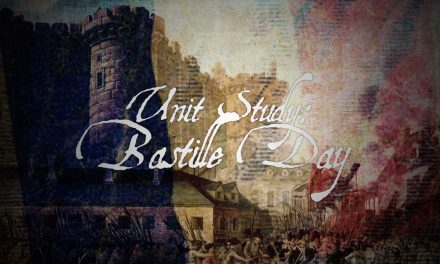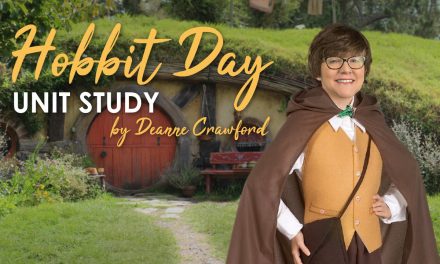“For me, the cube represents what freedom means. Freedom is never endless. It lets you do what is necessary to achieve your goals.” Ernő Rubik believed his invention was more than a fidget or puzzle to solve. Join me on a fascinating journey behind the scenes of the wildly popular Rubik’s Cube in this mini unit study designed to inspire families to learn together!
Read Mr. Rubik’s words above and ask children to explain it in their own words. Encourage them to think how a simple fidget puzzle could represent freedom. What does freedom mean? Take time to really explore this with your children. Here are a few ideas to start. Watch The Story of US: What Does Freedom Mean to You. Was there any responder that you agreed or disagreed with? Discuss the responses that resonated rightly or wrongly with your children. Together, read the Britannica Dictionary’s definition of freedom. This definition focuses on an individual being free to do what they want, without control or restraint. Ask them to describe how this may look if everyone did what they wanted without restraint or consideration of others. It has been said that if freedom is when a person can do what they want to do, then responsibility is when a person chooses to limit their freedom so others can enjoy theirs as well. Both are necessary for society to succeed. As we consider freedom, take time to watch Teaching Laws, Rights and Responsibilities and discuss it with your children. Understanding our freedoms, rights, and responsibilities is essential to becoming good citizens.
Why was the concept of freedom so important to Ernő Rubik? Born in Hungary, Mr. Rubik invented the cube during a time when his homeland was under communist rule during the Cold-War era. Rick Steves Classroom shares a bit about Budapest Hungary under communist rule. The Cold War (1947-1991) was a time of great tension and competition between the world’s superpowers: the United States and the Soviet Union. Take time to learn about the Cold War. Ducksters offers a basic introduction, and Cold War Crash Course gives more detail for older students, and parents. Together, discuss what the impact of the Cold War and Communist Rule had on Rubik’s Cube invention.
Receiving his patent for a “three-dimensional logical toy” in 1977, Mr. Rubik found a manufacturer to make 5,000 cubes, a number quite lofty at a time when making and selling toys was of little value. Wildly, two years later, 300,000 cubes had been sold in Hungary! Then in 1979, an expatriat businessman took the invention to the world’s largest Toy Fair in Nuremberg, Germany and convinced Ideal Toy Company to produce and market it. Quickly becoming a worldwide sensation, the Magic Cube’s name was changed to Rubik’s Cube. By 1982, approximately 100 million were sold. Today, that number is over 450 million, making it the best-selling toy in history! This leads us to another significant impact the Rubik’s Cube had on communist Hungary, the financial impact. Lauded as the first self-made millionaire in the Soviet Block, it is believed that Mr. Rubik’s invention and subsequent wealth fueled criticisms of communism through popular musical plays and editorials. While this is unconfirmed, one does wonder about the validity of it. Discuss these ideas with older children.
As we wrap up our study, let’s look at the Rubik’s Cube itself. Obtain one if you can and take a serious look at it. Simply designed with 9 colored squares on each of it’s six sides, the goal is simple, spin the cube until the color squares are out of order, then twist the cube until the colors are returned to their original order. Simple, right? According to mathematicians, there are more than 43 quintillion ways to align the squares, but only one correct way in the original 3 x 3 Cube. Would you be surprised to learn that it took Mr. Rubik one month to solve his magic cube? Even more amazing, the world record to solve Rubik’s Cube is 3.13 seconds! Experienced cubers seeking a new challenge have even set records blind folded, upside down, and even underwater! Have you been able to solve it? If not, its ok, you are in good company! It is estimated that less than 6% of people worldwide have solved it! Need some tips? Check out this tutorial video from WIRED. But don’t just stop at the original 3 x 3 Cube, take your puzzling skills to the next level with one of the newer puzzle options like the 4 x 4 cube or the 2 x 2 x 4 Tower. The possibilities are endless!
Family learning is a wonderful way to create memories and build relationships. It is my hope that this mini study has been an inspiration to your family. ~ Deanne
Classic Cubes:
- Rubik’s 3×3 Cube
- Rubik’s Classic Pack (3×3 Cube + Keychain Cube)
- Rubik’s 3×3 Speed Cube
New Twists on the Cube:
- Rubik’s 5×5 Cube
- Rubik’s Crystal Cube
- Rubik’s Perplexus Fusion 3×3
Rubik’s Cube Inspired Multi-Player Games:
- Rubik’s Race — Ace Edition (2 players)
- Rubik’s Roll – 5 Games in 1 (2-5 players)
- Rubik’s Battle Card Game (2 to 6 players)





